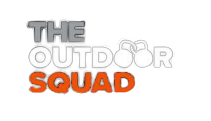The Squat & It's Alternatives
One of these things is compound movements. Compound movements are essentially the crux of weight lifting, and entail the basic movements of bench press, shoulder press, rows, dead lift, and the almighty squat. However, compound movements usually feature a barbell, something too big and clunky to be easily incorporated into outdoor fitness and boot camp style programs. But that doesn’t mean we have to do away with the movement all together. Below we’ll take a look at what the squat is, why it’s important, and what are some variations to the movement you may see in outdoor fitness and boot camps.
The Basic Squat
Like we said, the squat is a core compound movement, which means it works across multiple joints and muscle groups as opposed to isolating a single smaller group. In the case of a squat, you’re bending across both your hip and your knee joints (with maybe a little ankle too) while activating a whole range of lower body muscles, like glutes, hamstrings, and quads. The great thing about compound movements is that they also tend to show some love to smaller, lesser expected groups as well. This means that, in doing squats, you’re even getting some work in your abs and lower back as well.
Simply looking at what muscles a squat actually works sheds more light as to why it’s important. Its focus on glutes, hamstrings, and quads means it’s powering up the muscles that provide function and protection to some of the most important joints that we use every day for a ton of tasks. Think about how many times a day you stand up, sit down, or have to pick something up. A squat mimics these movements, and enhances your ability to perform them. This is incredibly important for your long terms health as you age.
The traditional barbell squat likely won’t make a ton of appearances at your outdoor fitness program, so here are some variations you might see:
Goblet Squats
The Goblet Squat isn’t a far cry from the traditional squat. Instead of a bar across your back, you have a dumbbell upright, held in front of you with bent elbows, and grasped with both hands. From there you squat normally until your thighs are at least parallel to the ground.
Kettlebell Swing
The Kettlebell Swing was covered in a previous piece. It obviously utilizes a kettle bell, sometimes grasped with both hands and sometimes with one hand at a time. The bell starts between your legs, hanging from straight arms, and with you in a semi squat position. As you push up into a standing position the bell swings out following your arms as they raise to parallel with the ground. The result is a great explosive exercise that really works the lower body, especially the hips and hamstrings.
Dumbbell Lunge
Finally, the dumbbell lunge is another variation usually featuring two dumbbells, one in each hand. The dumbbells hang freely to provide resistance as you step out into a lunge and then back to a neutral standing position, one leg at a time.
Conclusion
While each of these movements look drastically different and won’t utilize the same amount of volume a barbell squat can, they still work the same essential muscles a squat does. So if you’re a fan of compound movements, particularly squats, have no fear! Your boot camp and outdoor fitness program will have you more than covered!
